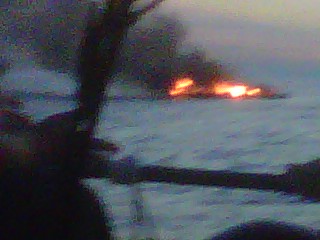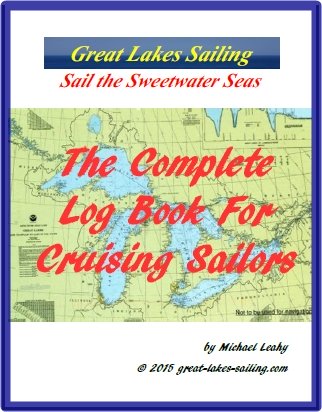A MINI BOATING SAFETY COURSE
Sailing is no more or less dangerous than any other human activity. The key observation is that it is as safe as you make it. In fact, statistically, sailing, especially for cruising sailors, is quite safe.
They tend to be older (more mature), engage in less dangerous behaviour (boating under the influence of alcohol), and be more prudent, knowing how expensive it is to repair broken boats! Along with that prudence comes an appreciation as well that as beautiful as the sea is, she is an unforgiving mistress.
When looking at the safety 'equation', there are 4 elements that I believe have to be considered. These are:
- the Boat
- the Crew
- the Plan
- Practice
Taken together, they form a type of mini boating safety course. The following pages will address each of these in more detail but I think some very general comments are in order.
The single most import thing to 'have' is a safety consciousness, an attitude that is strictly oriented to safety. Research shows that most accidents do not occur during storms or rough weather. Rather, they happen when water is calm, conditions are fine and you are unworried about any problems. That's when everything goes sideways. Going overboard is not a slow, graceful process – it is sudden, unexpected and for many, a fatal experience.
|
Personally, I have never seen a slow fire on a boat. This was a 33-36 foot power vessel. The fire burnt fast and furious. The couple were lucky to get off in time. |
 |
In 2011, the US Coast Guard reported that 73%% of the sailor fatalities was due to drowning. However, only some 25% of those who drowned were actually sailing! Of those who drowned, 84% were NOT wearing a life jacket. (Recreational Boating Statistics 2011, USCG) The story is clear – most sailors who drowned were not engaged in dangerous sailing conditions but rather were anchored, docking, moving casually around their boat or just relaxing on board – clearly not times when one would be worried about a mishap. And the cause? Suggested by the USCG report as the single leading cause? – operator inattention (77%).
This attitude of awareness, preparedness or mindfulness is vital in ensuring your safety on the water. The Canadian Safe Boating Council with the participation of the Canadian Coast Guard and other Canadian marine groups has a superb set of free videos entitled Cold Water Boot Camp. If this doesn't clearly show the risk of dying in cold water, nothing will.
The message from the US Coast Guard is 'Be Aware, Pay Attention'. The message of both the US Coast Guard and the Canadian Coast Guard is that the single most important safety action you can take is to wear a life jacket. The last thing you want to do is become one of the US Coast Guard's statistics!
Lets take a closer look at these four aspects of safety.
Click here for ideas about the BOATClick here for ideas about CREW SAFETY
Click here for ideas about PASSAGE PLANNING
Click here for ideas about SKILLS PRACTICE
Return from BOATING SAFETY COURSE to HOME PAGE
Check out our great deals on quality safety equipment
Name Brands Quality Products
Click the STORE button on the navigation bar
Join hundreds of fellow
sailors
Subscribe to Rhumb
Line for updates and new port reviews
Your e-mail address is secure.
It is used only
to send you
Rhumb Line
The Complete Log Book For Cruising Sailors
written by a sailor for sailors

a practical, easy-to-use yet thorough format to record all of the necessary information about your boat and any cruises you take – whether exploring home waters or voyaging to distant ports across the Great Lakes.
.
Click here for more details